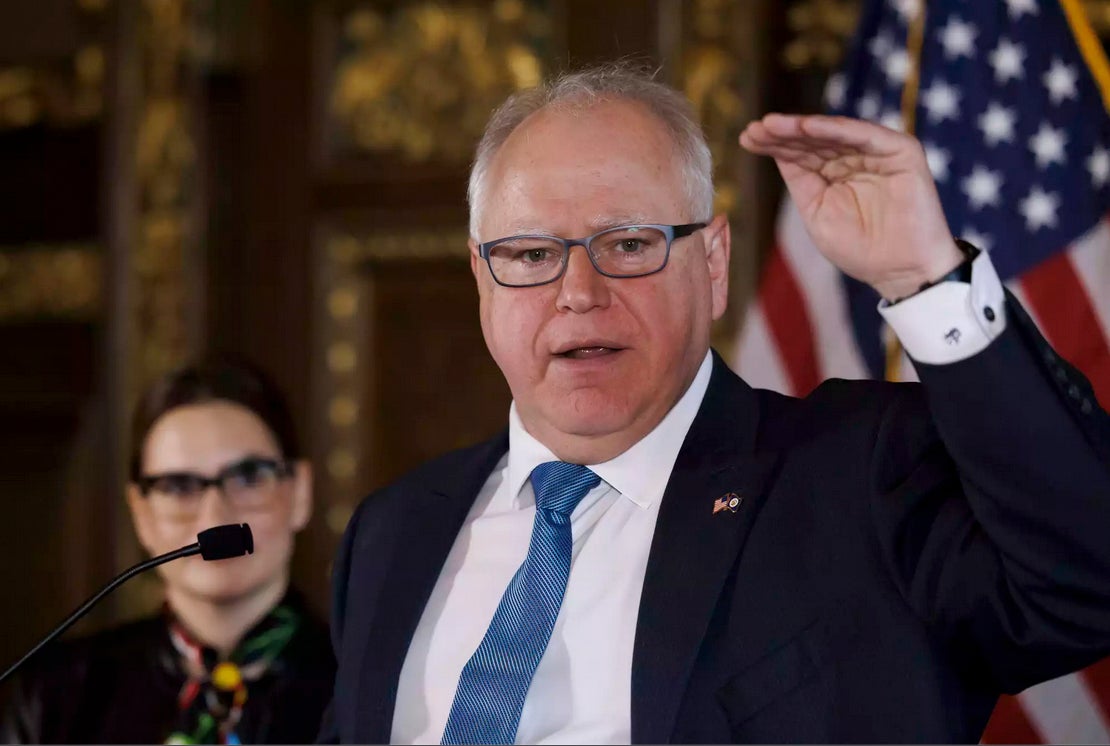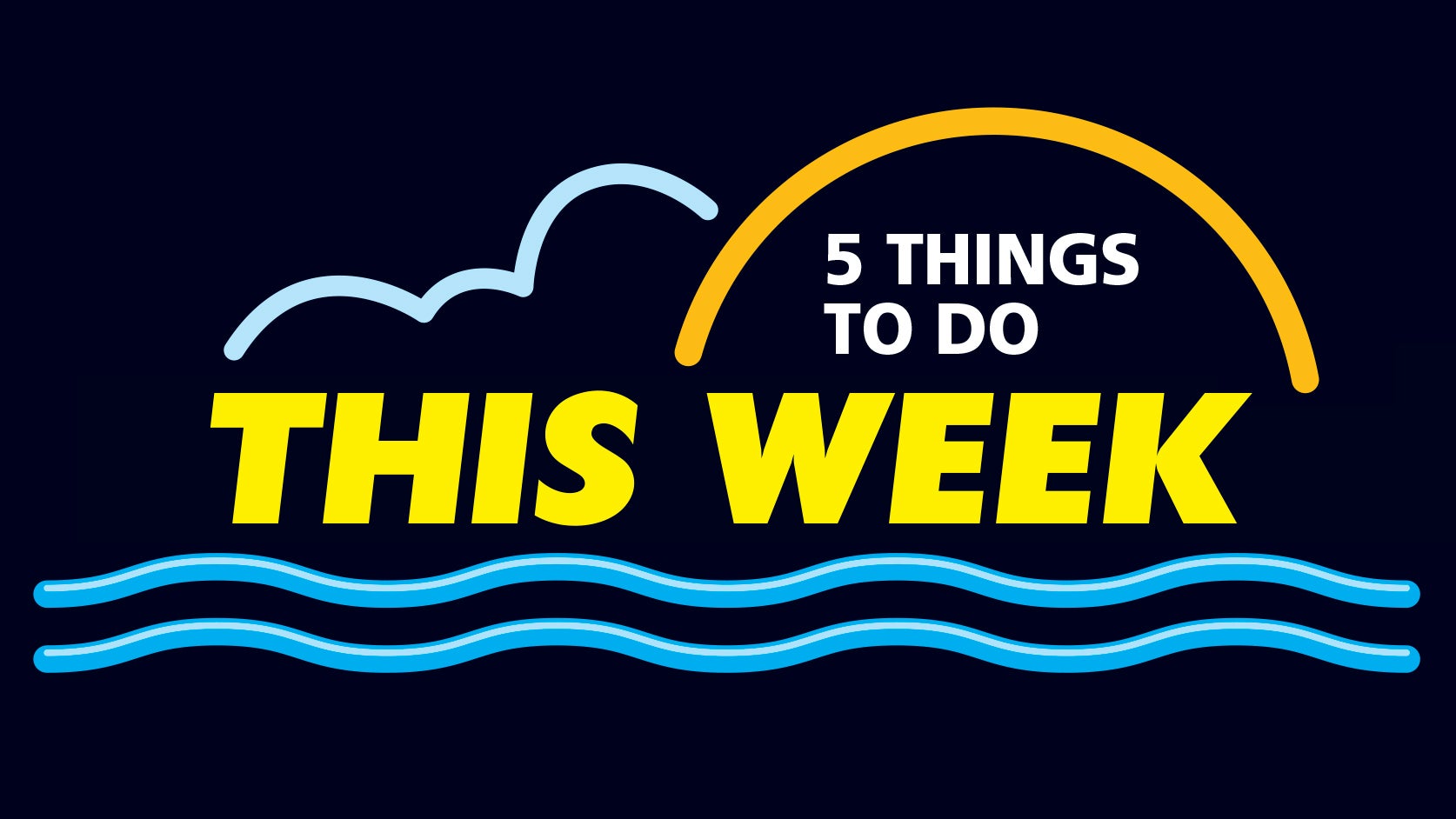Billions more for public schools, seed money for an ambitious paid-family leave program, large raises for health care workers: Gov. Tim Walz is going big in his budget plans, those he’s released already and in forecasting what’s to come.
The two budgets he proposed in his first term also bid high only to be hemmed in by Republican opposition. This time he’s got well-placed DFL allies and a giant budget surplus to carry his ideas forward.
“The chance between now and May when we finish up the legislative session and the implementation of this budget will have a profound impact on every single family across the state in a positive way,” Walz said when he put out proposals around education and child poverty last week.
He has showcased parts that he believes are cornerstones: education, workforce development, family-centered tax credits and a smattering of environment and climate proposals.
Of the items Walz has proposed already, the cost would be about $7.8 billion on top of what the state spends now in the same areas.
His public schools package alone totals more than $4.4 billion in added spending between now and mid-2025, with far more built into the years after..
The governor and the Legislature are set to pass bills that add spending for the fiscal year that ends in June and chart a course for the two years after that. They’ve got a projected $17.6 billion projected surplus covering that entire stretch.
Some of the proposals include one-time spending while others would add obligations that extend into the future.
It’s not yet clear if Walz is planning to reshape or otherwise retract programs in place now, which would offset the new expenses. Nor is it known if he’ll seek broad tax increases that would take hold immediately.
Walz has said Minnesota has a once-in-a-generation chance to invest in priorities and reorient government services, such as his plan for a new Department of Children, Youth and Families that would pull duties from several agencies assigned to matters of child well-being now.
He’s talked about positioning the state for a new economy around clean energy. And he says he wants to make it easier to raise families here, through supersized dependent care tax credits, building out the child care structure and an emphasis on early learning.
“I think in some areas we’ve lived on our laurels a little bit. Those who came before us made some really innovative and dramatic things. And it wasn’t by chance Governor Anderson landed on the cover of Time Magazine,” Walz said in an interview this month with MPR News.
“We’re not being nostalgic and going back to 1972 the Minnesota Miracle. Minnesota has changed since 1972.”
Critics of the plans, especially legislative Republicans, have charged they will plow money into systems without corresponding change, expand government control and shortchange tax relief.
“The Democrats’ education spending proposals are really a public relations stunt to send even more money into struggling schools without any accountability to parents or student achievement,” said Sen. Jason Rarick, R-Pine City, the day Walz unveiled that portion.
The Walz administration responded with a list of validators, including Alisha Porter of the Children’s Defense Fund Minnesota.
“While everyone talks about the importance of our children, this budget puts the money on the line and walks the talk,” she said.
On Monday, Walz is expected to detail plans for public safety. He proposed a $300 million package last year that would have given local law enforcement more money and put dollars into violence intervention programs. He has said he’ll try again to pass those items.
Additional information is likely around health and social service programs, too. It’s one of the bigger areas of the budget and covers everything from welfare to elder care to disability services.
A reboot is possible of a past Walz plan to open the MinnesotaCare public insurance program to people on the individual insurance market — those who are self-employed, farmers and others who might want to buy into the public program.
Also on tap are his plans for housing, whether that’s assisting renters or encouraging more construction of new homes in places where capacity and affordability are lacking.
That narrows the suspense for Tuesday, when the full budget gets officially sent to the Legislature.
By then he’ll have issued complete plans around taxes. Walz is again proposing tax rebates, although it’s likely he will narrow who is eligible to lower the price tag and alleviate concerns raised by other Democrats.
He’s hinted he’ll push to exclude more Social Security income from state taxes but is unlikely to recommend a full repeal as some DFLers and all Republicans lawmakers want. Local government aid levels will probably get boosted, which affects property taxes.

It’s still unknown what Walz will seek to put into general state agency operations, which will dictate the size of raises that executive branch employees might ultimately get.
And transportation is another question mark: Will he again propose to boost fuel and transit taxes to shore up those areas to allow for additional road construction?
At the end will be a bottom line number for proposed two-year state spending. It’s expected to be in the $60 billion ballpark.
Unlike the federal government, Minnesota’s constitution requires a balanced budget so all the numbers will need to net out.
What the governor proposes and the Legislature adopts won’t be carbon copies. But there will be many similarities. He and the DFL majorities in both chambers have roughly the same agenda.
The main tension point will be around taxes — the Walz rebate checks and Social Security exemptions are two areas to watch. And there might also be some differences on education spending — what strings are attached and how fast the money gets out.
Republicans will have a lot to say about the package and its components. But their role in shaping the final product depends on possible fractures among Democrats and harmony on their side.
Veteran Republicans, including Rep. Pat Garofalo of Farmington, are realistic about what’s ahead.
“There’s not going to be much of a debate. The Democrats control 52 percent of the Legislature. But they’ve decided they’re going to make 100 percent of the decisions,” Garofalo said. “And with the largest state budget surplus in state history, that money is going to get spent.”
Garofalo is the top Republican on the House Ways and Means Committee, which will give him a platform to speak up about what he calls “some warning lights on the dashboard” around population trends and business anxiety. He said it would be a mistake to overcommit to new programs that could be tough to unwind later.
“Even though they have very slim majorities in the House and Senate, they have taken the last election as a mandate to reshape Minnesota and to transform the state of Minnesota into more of a government that mimics those of Illinois, California and Oregon. And that’s the mandate that they feel they have,” Garofalo said. “I disagree with that. I don’t think that’s what Minnesotans voted for.”




